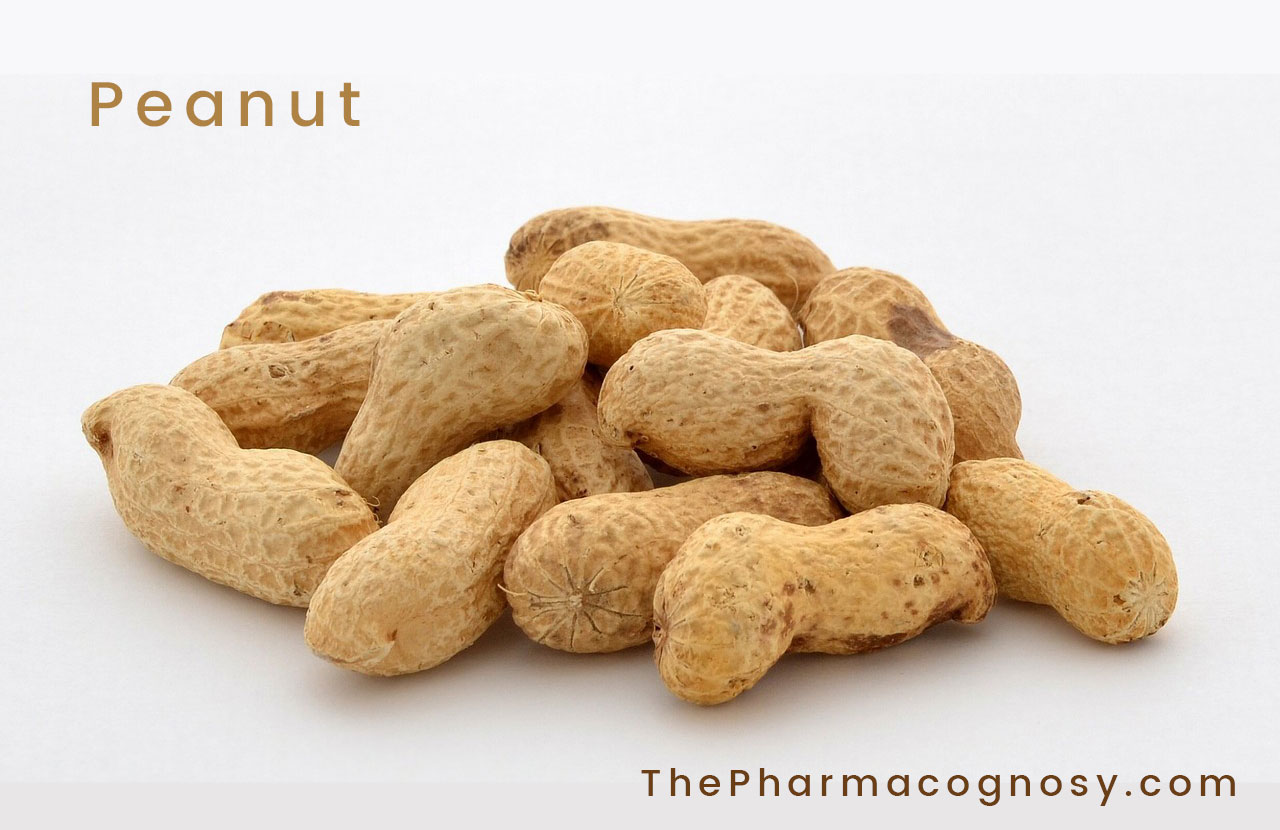Synonyms:
Ground Nut, Earth Nut, Arachis Seed.
Botanical Source:
Peanut consists of the seeds of Arachis hypogoea Lirin., an annual plant of the family Papilionaceae.

Geographical Source of Peanut:
The plant is a native of tropical South America and is now widely cultivated throughout tropical Africa including Nigeria and Kenya and many Asian countries including Bangladesh, India, China and Indonesia.
Macroscopical and Microscopical Characters:
Seeds are borne in underground light brown pods, 1 to 3 seeds in each, very closely pressed to each other. This mutual pressure causes one seed to be flattened at the hilar end and the other at the chalazal end. They are 5 to 15 mm in length and ovoid-cylindrical in shape. The testa is brownish red, brittle and papery; the kernel consists of two yellowish-white, large, fleshy, plano-convex cotyledons, which are grooved on the flat surface, and a small radicle and plumule. They have a nutty odour and starchy taste.
Chemical Constituents:
The chief constituents of Peanut include 50 to 60 per cent of fixed oil, 25 to 30 per cent of proteins and 15 to 20 per cent of starch. The brown covering of the seeds are rich in vitamins and minerals
Uses of Peanut:
Peanut is commercially used to produce Peanut oil, which is commonly used as edible oil. This oil is also used as a solvent for intra-muscular injections.
Roasted or boiled Peanut is commonly eaten as very tasty and nutritious pass-time food.

